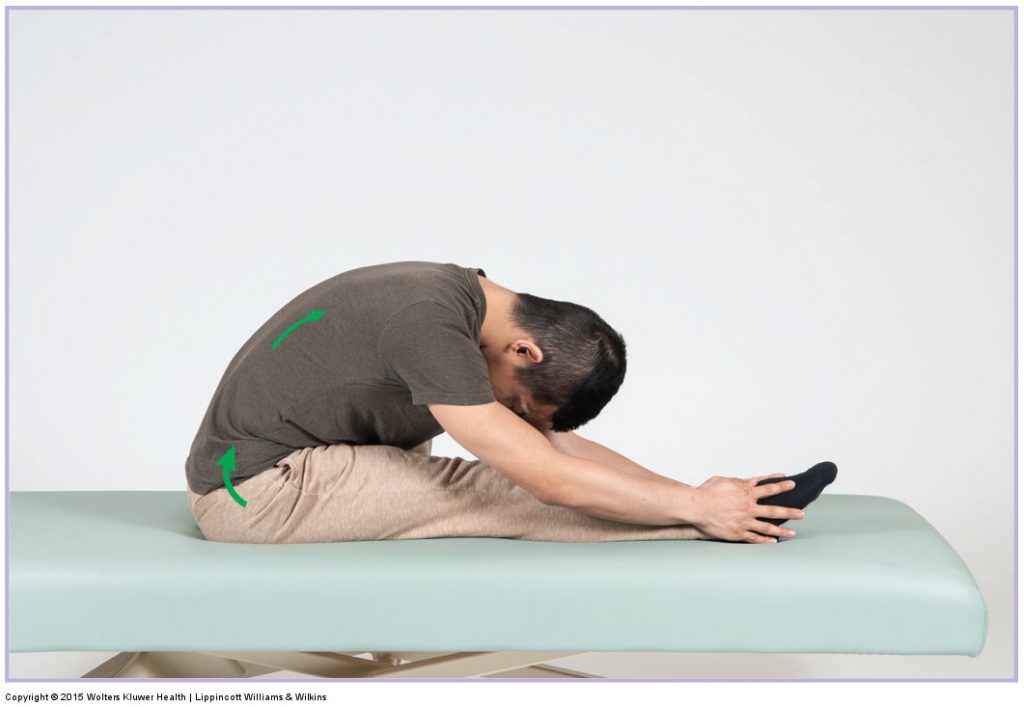This blog post article is part of a series of articles on assessment of the low back and pelvis. Scroll to the end of this article to see the others in this series.
Self-Care Advice for the Client

Static stretching of the low back. Permission Joseph E. Muscolino DC. Manual Therapy for the Low Back and Pelvis – A Clinical Orthopedic Approach (2015)
It can be very helpful to involve the client in his or her own treatment plan. Regarding self-care advice, it is extremely valuable to offer the client suggestions about postures, hydrotherapy (hot and cold), stretching, and strengthening (if your scope of practice permits). After all, even if a client sees the therapist three times a week for an hour at each session, the client is still on his or her own for the other 165 hours of the week. If the client is engaging in unhealthy postures and activities at home and work, this can easily overwhelm the therapist’s ability to assist. If instead the client uses that time to further the objectives of the treatment plan, then recovery will proceed more quickly.
Note: Giving Self-Care Advice
It is best to avoid over-recommending when giving self-care advice to clients. Whereas many clients will do one, two, or, perhaps, three recommended stretches, if the therapist gives them four, they will probably become overwhelmed and do nothing. Whether the threshold for being overwhelmed is 4 or 10, in general, the best rule regarding self-care advice is to give the client as much as he or she will do, and no more. The exact amount will vary according to the client’s level of self-discipline and enthusiasm. Once the client is comfortable with the stretches or other self-care advice that is recommended, more can gradually be added in future sessions.
This blog post article is the 17th in a series of 18 blog posts on the subject of assessment of the low back and pelvis.
The blog post articles in this series are:
- Introduction to Assessment of the Low Back and Pelvis
- Health History
- Introduction to Physical Assessment Examination of the Low Back and Pelvis
- Postural Assessment of the Low Back and Pelvis
- Range of Motion and Manual Resistance Assessment of the Low Back and Pelvis
- Muscle and Bone Palpation of the Low Back and Pelvis
- Joint Motion Palpation Assessment
- Overview of Special Orthopedic Assessment Tests of the Low Back and Pelvis
- Straight Leg Raise Tests for Space-Occupying Lesions
- Cough Test and Valsalva Maneuver
- Slump Test
- Piriformis Stretch Test
- Straight Leg Raise and Manual Resistance Tests for Strains and Sprains
- Nachlas and Yeoman’s Tests
- Sacroiliac Joint Medley of Tests
- Treatment Strategy for the Low Back and Pelvis
- Self-Care Advice for the Client with a Low Back / Sacro-Iliac Joint Condition
- Brief Review of Assessment and Treatment of Conditions of the Low Back and Pelvis


